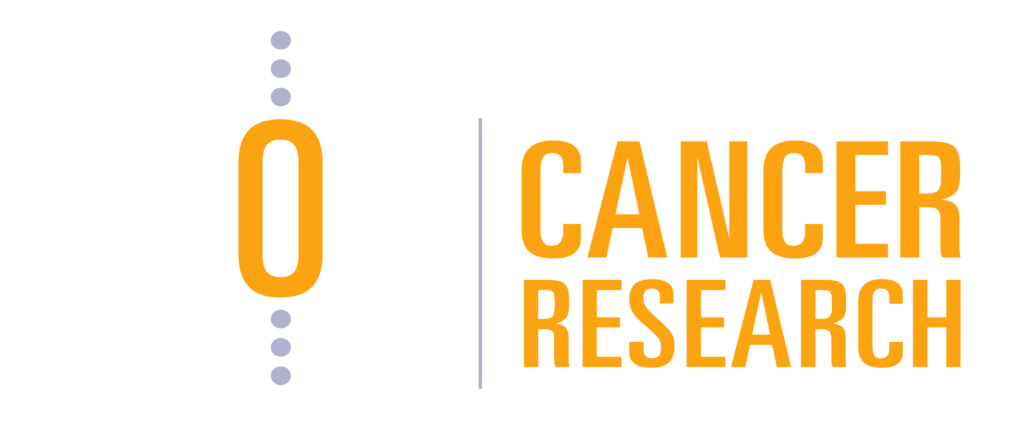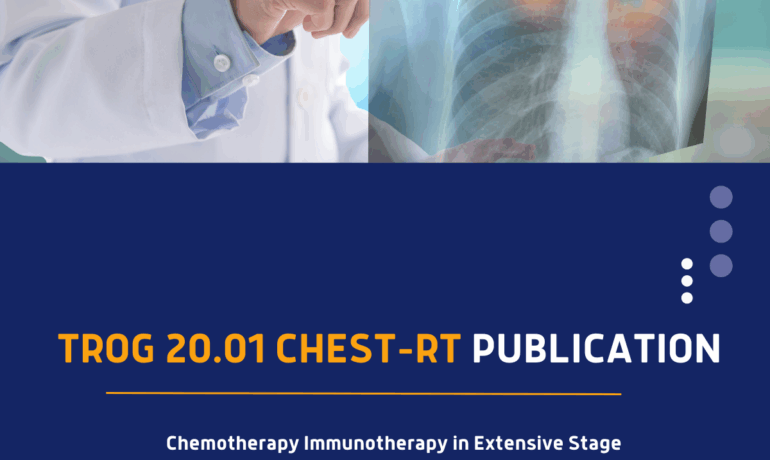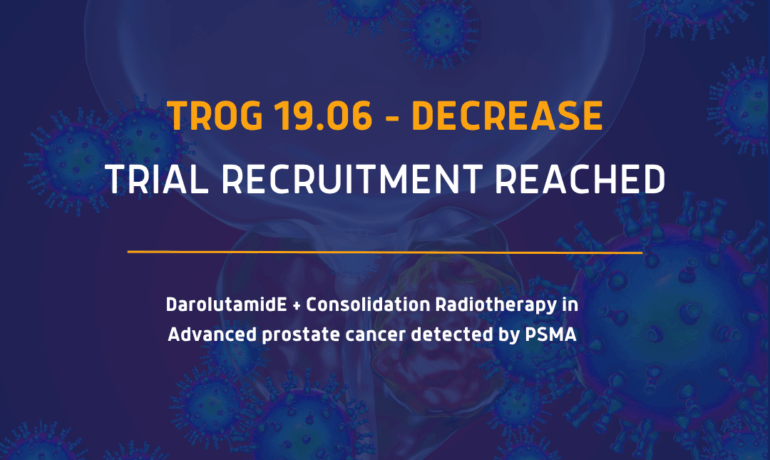Prostate cancer is one of the most common cancers amongst men, with one in six men diagnosed before their 85th birthday (Cancer Australia). In fact, in 2019 alone over 19,000 men in Australia were diagnosed with prostate cancer.
The high rate of prostate cancer diagnosis in Australian men has led this to be one of our key research focus areas at TROG Cancer Research. Members of the TROG community have achieved great outcomes through radiation therapy research and are continuing to collaborate internationally to improve treatment options and quality of life for patients with prostate cancer.
One recent study, which was published in March, aimed at investigating whether a molecular imaging approach using prostate-specific membrane antigen (PSMA) could help doctors better define the extent of the disease at the time of diagnosis.
Through this study, researchers also hope to find ways for doctors to better manage the treatment of prostate cancers, so patients will undergo better treatment in the future.
An overview of the ProPSMA study
The study commenced in 2017 with the recruitment of 302 men with biopsy-proven prostate cancer and high-risk features across ten different hospitals in Australia. It was led by Nuclear Medicine Physician, Prof Michael Hofman in Melbourne, and included a collaboration between Nuclear Medicine, Urology, Radiation Oncology and Medical Oncology.
Patients were assigned at random to either a conventional imaging option such as CT and bone scan, which is most commonly used, or the PSMA PET-CT option, which was the new line of imaging being tested.
The PSMA PET CT approach combines two imaging technologies – positron emission tomography (PET) and computed tomography (CT).
The two different imaging processes began 21 days after patients were randomised. From there, patients crossed over to the other imaging arm unless three or more distant metastases were identified.
Once the data was obtained from patients who underwent conventional imaging versus PSMA PET-CT, researchers aimed to look at whether one method was more effective at locating whether patients had pelvic nodal or distant metastatic disease.
What the study revealed was that the PSMA PET-CT imaging option had a 27 per cent greater accuracy in comparison to conventional imaging (92 per cent v 65 per cent respectively). Through this data, researchers found that conventional imaging had lower sensitivity and specificity rates in comparison to PSMA PET-CT.
Researchers were able to conclude that PSMA PET-CT is a more suitable replacement for conventional imaging, providing superior accuracy to the combined findings of CT and bone scanning.
The benefits for future prostate cancer patients
Even though this study was not conducted to provide a cure or calculate the overall effect on patient survival, this study has improved the way in which doctors can and will administer treatment.
Doctors can now decide whether to offer patients a localised treatment option, such as surgery or radiation therapy, or opt for whole body treatments such as hormonal therapy depending on how far the cancer has spread at the time of diagnosis. This may spare patients from the side effects of surgery or radiotherapy to the prostate when the chance of cure is less.
Collaboration the secret to driving prostate cancer research forward
Collaboration across specialities, locations and organisations has always been vital to the success of cancer research. It has been a focus of our organisation since we were first established and continues to prove to be a successful philosophy for improved outcomes for cancer patients locally and globally. Prof Michael Hofman has now established a collaborative platform which already has a strong pipeline of successor studies.
Without the contribution of TROG researchers, such as Professor Jarad Martin, as well as a dedicated team of professionals around the world, the management of aggressive cases of prostate cancer would continue with treatments that aren’t always best suited to each patient’s needs.
Australasian Radiopharmaceutial Trials Network (ARTnet) collaborator, Associate Professor Rosyln Francis, recently stated that:
“The ProPSMA trial has provided an excellent opportunity for sites across Australia to participate in a study designed to provide evidence for the role of PSMA PET-CT in high risk prostate cancer. The collaborative approach has been a strength of this study.”
Associate Professor Francis said expenses for the PSMA PET-CT vary around the world. However, she believes the new approach could in fact be more cost-efficient than previous imaging techniques.
“A full health-economic analysis will follow, using data collected in this study,” she said.
By combining nuclear medicine, radiation oncology and other disciplines, these researchers are creating innovative solutions that will benefit patients now and into the future.
The investigators are thankful to the funding from the Prostate Cancer Foundation of Australia and Movember that made this important finding possible.
To read more about the developments TROG Cancer Research and our member community have made towards advancing treatment and quality of life for prostate cancer patients, click here.
Alternatively, if you would like to read more about this study, you can access the full journal article here.
Related Post
New paper outlines protocol for important TROG 20.01 CHEST-RT lung cancer trial
TRIAL UPDATE: 15 July 2025 The TROG 20.01 CHEST-RT
Recruitment Milestone Achieved for TROG 19.06 DECREASE Trial
TRIAL UPDATE: 8 July 2025 The TROG 19.06 DECREASE







